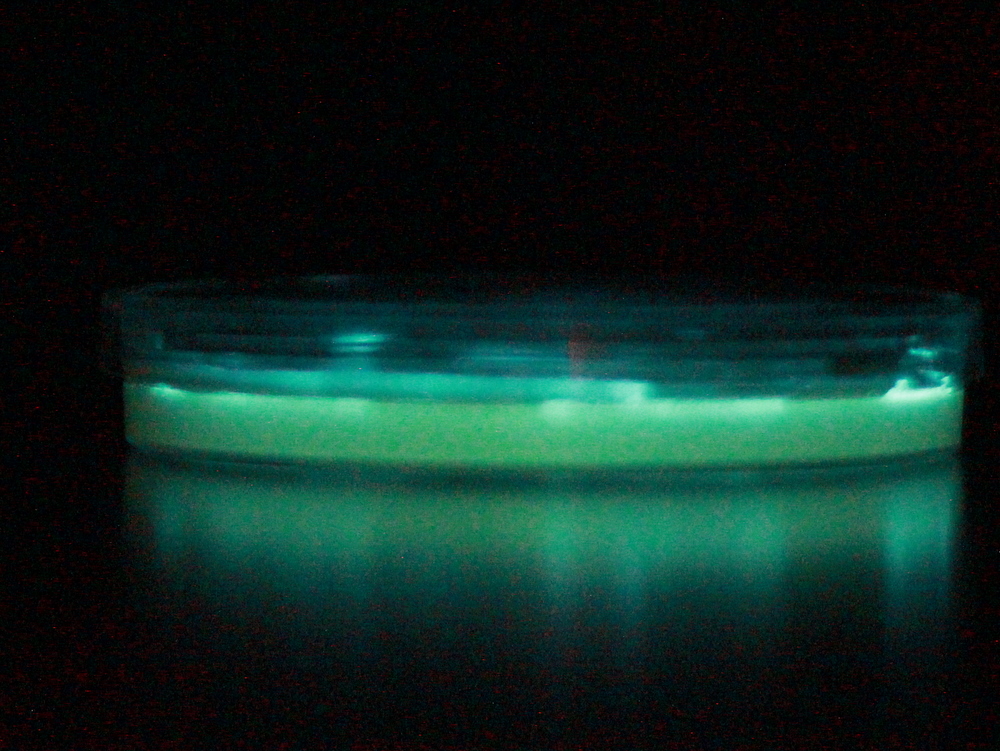Team:Cambridge/Human Practices
From 2010.igem.org
(Difference between revisions)
Theos (Talk | contribs)
(New page: {{:Team:Cambridge/Templates/headerMinimalprototype}} {{:Team:Cambridge/Templates/headerbar|colour=#fb5c2b|title=Human Practices}} {{:Team:Cambridge/Templates/RightImage|image=Cambridge-Pho...)
Newer edit →
(New page: {{:Team:Cambridge/Templates/headerMinimalprototype}} {{:Team:Cambridge/Templates/headerbar|colour=#fb5c2b|title=Human Practices}} {{:Team:Cambridge/Templates/RightImage|image=Cambridge-Pho...)
Newer edit →
Revision as of 23:53, 18 October 2010

Human Practices
Under construction
Bacterial lux operons emit light using five enzymes:
- luxA and luxB form the luciferase part of the system, they emit light using the substrate tetradecanal
- luxC, luxD and luxE are involved in the biosynthesis of tetradecanal from readily available substrates
Bioluminescent species
The Cambridge team is looking into these bacterial luciferases:
- Vibrio fischeri forms symbioses with squid to prevent the squid from casting a shadow on moonlit nights. Due to this their lux proteins are non-functional above 30 degrees
- Vibrio (formerly Photobacterium) phosphoreum emits a very blue light, perhaps partly through its use of [http://partsregistry.org/Part:BBa_K216007 lumazine]
 "
"
